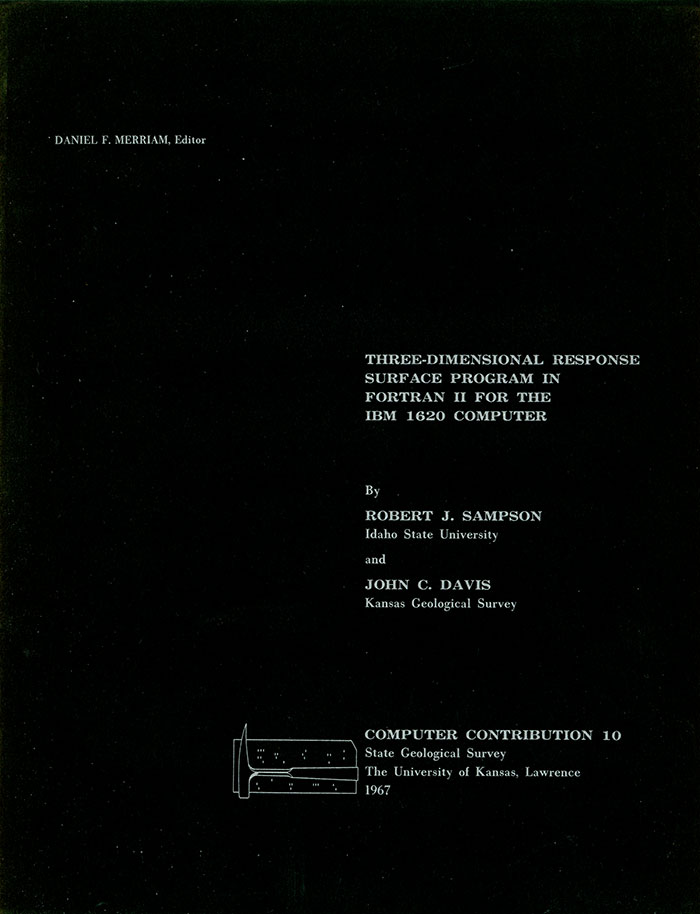
Kansas Geological Survey, Computer Contributions 10, originally published in 1967

Originally published in 1967 as Kansas Geological Survey Computer Contributions 10.
Response surfaces are special forms of multiple regressions in which the independent variables are geographic coordinates. They are extensions of the process of fitting a regression line to data by the method of least squares. "Trend surfaces" are a variety of response surfaces commonly used in geologic analysis in which two independent geographic variables are used. The dependent variable may also be geographic (depth or elevation) or it may represent such characteristics as mineral or elemental content. Trend surfaces usually are depicted as undulating map surfaces in which elevation represents the dependent variable.
Response surfaces may be extended to three dimensions by the addition of another independent variable. Forms with three independent geographic variables may be pictured as a solid form with values of the dependent variable distributed through it. Harbaugh (1964) refers to this type of regression as a "hypersurface." It is possible to extend the concept to other dimensions, but the resulting regression cannot be portrayed in ordinary space, and consequently has little use. The relationships between multiple regression, trend surfaces, and hypersurfaces are illustrated in Figure 1.
Peikert (1963) and Harbaugh (1964) have written programs for larger computers which generate three-dimensional response surfaces. These programs have been used to analyze mineralogical changes within igneous bodies (Peikert, 1962, 1963, 1965; Whitten, 1963; Whitten and Boyer, 1964) oil gravity (Harbaugh, 1964) and oil-shale yield (Smith and Harbaugh, 1966). The program described here has been used on oil-gravity data and on mineral composition data from a black shale. The procedure is a useful means of summarizing almost any sort of spatially distributed compositional data.
Figure 1—Relationships between trend and hypersurface analysis, and general field of multiple regression.

Read the PDF version (4.3 MB)
Kansas Geological Survey
Placed on web Aug. 27, 2019; originally published 1967.
Comments to webadmin@kgs.ku.edu
The URL for this page is http://www.kgs.ku.edu/Publications/Bulletins/CC/10/index.html